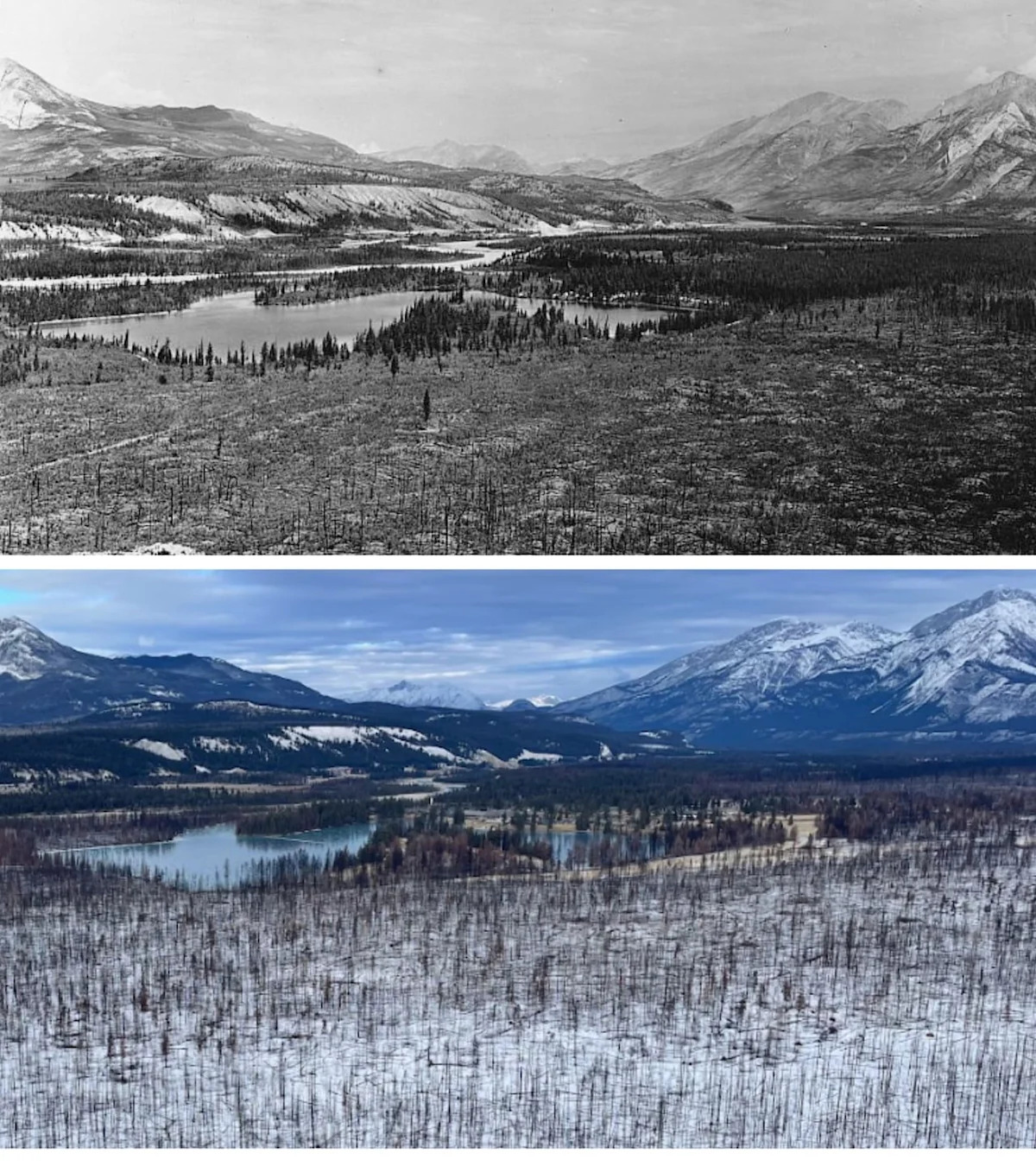Home / Environment / Hikers Witness Jasper's Rebirth Through Innovative Photo Monitoring
Hikers Witness Jasper's Rebirth Through Innovative Photo Monitoring
5 Oct
Summary
- Jasper wildfire in 2024 drastically changed landscape
- Parks Canada and University of Waterloo launch citizen science project
- Hikers can upload photos to track post-fire regrowth

As of October 2025, visitors to Old Fort Point in Jasper National Park are witnessing a dramatic transformation of the landscape following the devastating wildfire that swept through the area in July 2024. The once-lush forest has been replaced by a mosaic of charred patches, a sight that now bears a striking resemblance to photos taken in the early 1900s.
However, the landscape is slowly but surely beginning to regenerate, and Parks Canada has teamed up with the University of Waterloo to engage the public in this process. Through a citizen science project, hikers on the popular 3.8-kilometer Old Fort Point trail can now capture and upload photos to help researchers track the area's rebirth.
The project, known as GeoReach, uses standardized imagery data to monitor changes in various landforms across Canada, including post-forest fire regrowth. Visitors can take photos from designated stations along the trail and directly upload them to the GeoReach website, contributing to a growing gallery that showcases the transformation.
"It gives a really good opportunity for visitors and everyday people to just connect with the landscape and to connect with that process of ecological integrity monitoring and citizen science," said Kevin Gedling, a Parks Canada communications and engagement officer.
The early signs of regeneration are already visible, with vibrant grass, purple fleabane, and yellow arnica emerging from the charred soil. Fireweed, a plant that thrives in nutrient-rich post-fire environments, is also beginning to appear, and Gedling expects it to flourish in the coming years.
While the Jasper wildfire complex caused significant damage, destroying one-third of the townsite's structures and displacing 2,000 people, Gedling acknowledges that such events are a natural part of the forest's life cycle. "As far as a natural process is concerned, this is literally one of the better things that can happen to it," he said.



